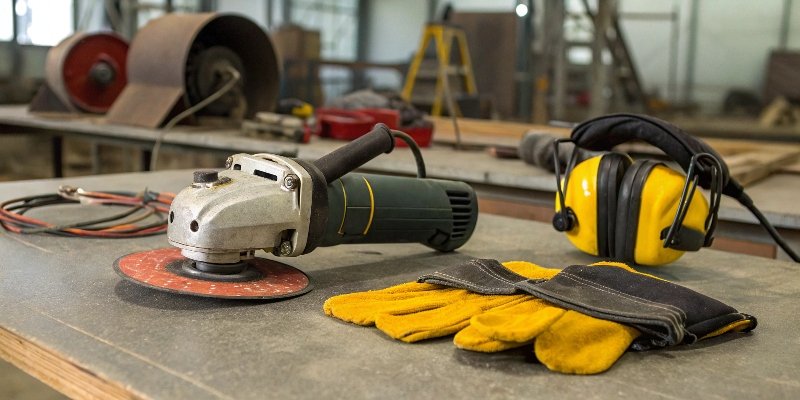
Struggling with worksite safety compliance? Using oversized tools can pose huge risks. Understanding Australia’s ban on 9-inch grinders helps you see why safety regulations are so critical for your team.
Australia banned or restricted 9-inch angle grinders because of extreme safety risks. These powerful tools cause violent kickbacks, are very hard to control, and have a high rate of disc shattering. These issues have led to severe injuries and even deaths on worksites across the country.
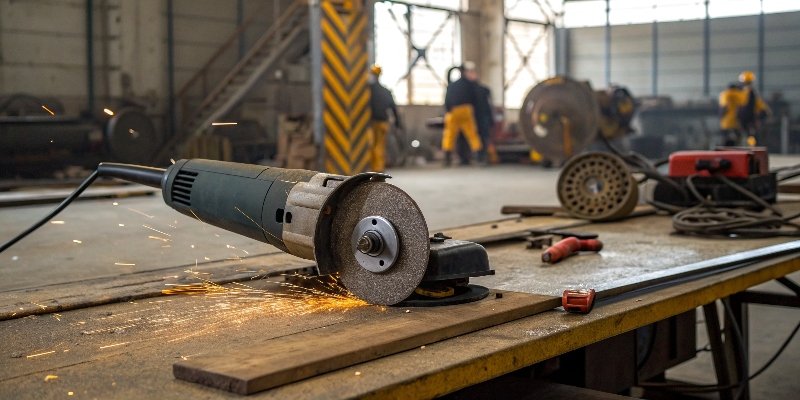
This action from Australian safety authorities is a powerful reminder for every business in our industry. The decision wasn’t made lightly. It directly responds to a pattern of serious accidents. But is it a complete, nationwide ban, or are there exceptions? The details are important for any purchasing manager or technical director to understand. Let’s look closer at the specific rules and the dangers that prompted them.
Are 9 inch grinders illegal in Australia?
Confused about local tool regulations? A simple yes or no answer isn’t enough. You need to know the specific rules to keep your team safe and compliant.
A 9-inch grinder is not completely illegal everywhere in Australia. However, it is banned on all construction sites in major states like Queensland, New South Wales, and Victoria. Other states allow them but require strict safety measures, like anti-kickback clutches and dust suppression systems.

The rules for these large grinders vary by state. This is a key point we always stress to our international clients. You cannot assume a tool is approved everywhere. In our nearly 30 years of manufacturing abrasive tools, we’ve seen how regional safety standards drive purchasing decisions. A major incident in Queensland in 2016, where a worker was killed by a kickback, became a turning point. It pushed WorkSafe bodies in Queensland, New South Wales (NSW), and Victoria to enforce outright bans on construction sites. In these states, a 9-inch angle grinder simply cannot be used for construction work. Other states and territories might permit their use, but only if the tool is equipped with advanced safety features. This includes dead-man switches, anti-kickback technology, and often, mandatory water-fed systems1 to control hazardous dust. As a buyer, you must verify the specific regulations in the region of operation.
What is a 9 inch angle grinder used for?
Big jobs seem to demand big tools. But what are these powerful 9-inch grinders specifically designed for? Using the right tool for the job is the first rule of safety.
A 9-inch angle grinder is a heavy-duty tool built for the most demanding jobs. It is used for making deep, fast cuts in thick materials like large steel pipes, heavy rebar, and substantial concrete slabs. Its power and size are for major industrial and demolition tasks.
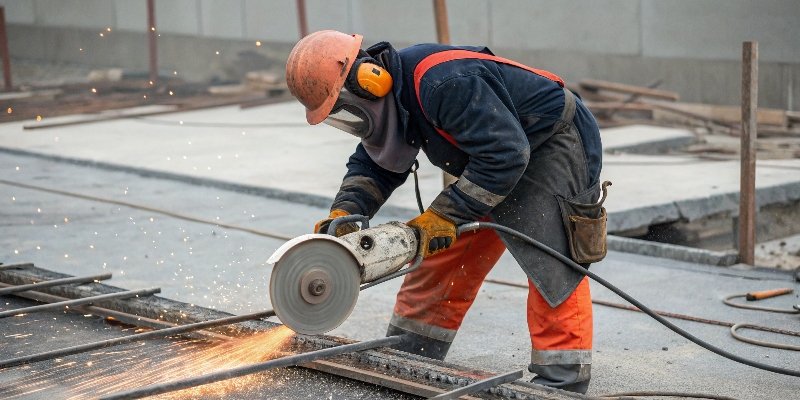
The primary purpose of a 9-inch (230mm) grinder is heavy-duty material removal. Think of large-scale projects, not small workshop tasks. We manufacture discs for these machines, and they are engineered for extreme applications.
Common Heavy-Duty Uses
- Civil Engineering: Cutting through thick reinforced concrete or large-diameter metal pipes.
- Demolition: Quickly breaking down structural steel and masonry.
- Shipbuilding: Cutting and grinding thick steel plates.
- Large-Scale Fabrication: Preparing large metal components where speed and depth of cut are essential.
The problem is when this power is misused. We once had a client who used a 9-inch grinder to cut a small metal bracket because it was the only tool available. The force of the tool twisted the small piece out of his clamp, and he was lucky to avoid injury. This story shows the danger. Its massive power is not suitable for small or delicate work. For those jobs, a 4.5-inch or 5-inch grinder offers far better control and safety.
Will a 9 inch grinder cut through a brick?
Cutting masonry with a big grinder seems like a fast solution. But is it the safest or smartest choice? The answer could protect you from a very dangerous situation.
Yes, a 9-inch angle grinder with a diamond blade will cut through brick with ease. Its powerful motor and large disc diameter are ideal for making deep cuts in bricks, concrete blocks, and other masonry. However, this task comes with extreme risks.
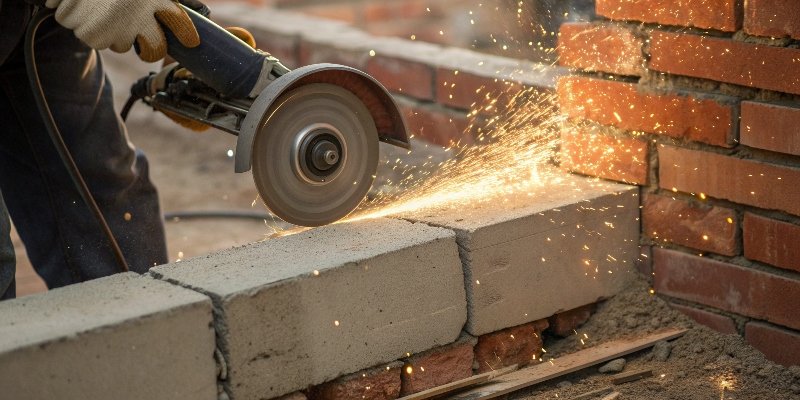
While it is technically possible, cutting bricks with a 9-inch handheld grinder is not recommended. The danger is immense. First, there is the risk of a violent kickback. If the large diamond blade jams in the dense brick material, the reactive force is powerful enough to break a user’s wrist or throw the 5kg tool into the air. We’ve heard too many stories about this from our industry partners. Second, cutting brick creates a large amount of crystalline silica dust. Inhaling this dust can lead to incurable lung diseases like silicosis2. This is why some Australian regulations mandate water-cooling systems, as they suppress the dust at the source. A much safer alternative is to use a tool designed specifically for the job, such as a dedicated masonry saw. These saws often have integrated water feeds and a stable base, which gives you far more control and eliminates most of the dust. The right tool is always the safest tool.
Where should angle grinders not be used?
Knowing where not to use a tool is just as important as knowing how to use it. An angle grinder in the wrong place can be a disaster waiting to happen.
Never use an angle grinder in wet environments without proper electrical protection. You should also avoid using them near any flammable materials, dusts, or vapors. Do not operate grinders in awkward or unstable positions where you cannot control a kickback.
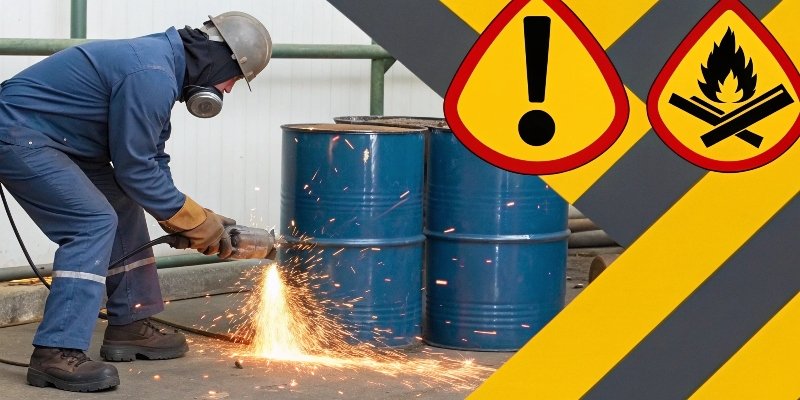
At our factory, safety is part of quality. A great tool used incorrectly is a dangerous tool. This is especially true for angle grinders, and particularly for the 9-inch models. Based on accident reports and decades of experience, here are situations to avoid.
Key Risk Scenarios
- Flammable Environments: The sparks from an angle grinder can reach very high temperatures. Using one near flammable liquids, gases, or even combustible dusts (like wood or grain dust) is extremely dangerous and can cause a fire or explosion.
- Unstable Positions: Never use an angle grinder while standing on a ladder, scaffolding, or any unsteady surface. The gyroscopic effect and potential for kickback require you to have a firm, stable stance. Working overhead is also very risky.
- Without a Guard: The blade guard3 is the most critical safety feature. It deflects debris and contains fragments if the disc shatters. We hear reports of operators removing them for better visibility, and this is a major cause of serious injury.
The data below shows why a 9-inch grinder is so much riskier than its smaller counterpart. The forces are simply on another level.
| Feature | 9-Inch Grinder | 4.5-Inch Grinder |
|---|---|---|
| Peak Kickback Force | 120-150N | 40-60N |
| Gyroscopic Effect | High | Low |
| Annual Accident Rate | 23.7 (per 10k) | 4.1 (per 10k) |
These numbers clearly explain the bans. A 9-inch grinder has up to three times the kickback force4, making it fundamentally more dangerous for a human to control during a jam.
Conclusion
The ban on 9-inch grinders in parts of Australia is a direct result of severe safety risks. Always prioritize operator safety by choosing smaller, more controllable tools whenever possible.
Written by
leeon
You may also be interested in:
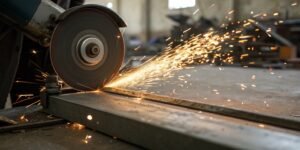
Can you use a diamond blade to cut through metal?
You need to cut some metal, and the diamond blade on your saw is right there. Using the wrong disc can destroy your blade, damage
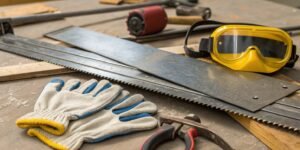
How to cut through metal inexpensively?
Struggling with high costs for cutting metal? These expenses can quickly eat into your project’s budget, slowing down your progress. Here are the most practical

Can you cut more than just metal with an abrasive chop saw?
Stuck thinking your abrasive chop saw is a one-trick pony for metal? This mindset costs you money and clutters your workshop with tools you may

How do you cut bolts with an angle grinder?
Struggling to make a clean cut on a stubborn bolt? Using an angle grinder can feel intimidating, but it is a fast and effective method
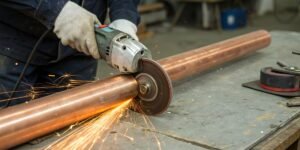
Can I use an angle grinder to cut a copper pipe?
Struggling with a quick copper pipe cut? Worried about damaging the material? An angle grinder is a fast solution, but using it wrong can be
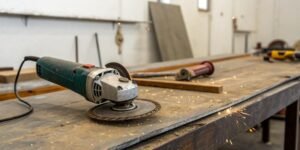
Can an angle grinder cut meat and bones?
Struggling to cut tough bones? Thinking of grabbing your angle grinder for a quick solution? This powerful tool seems like an easy answer, but it’s
